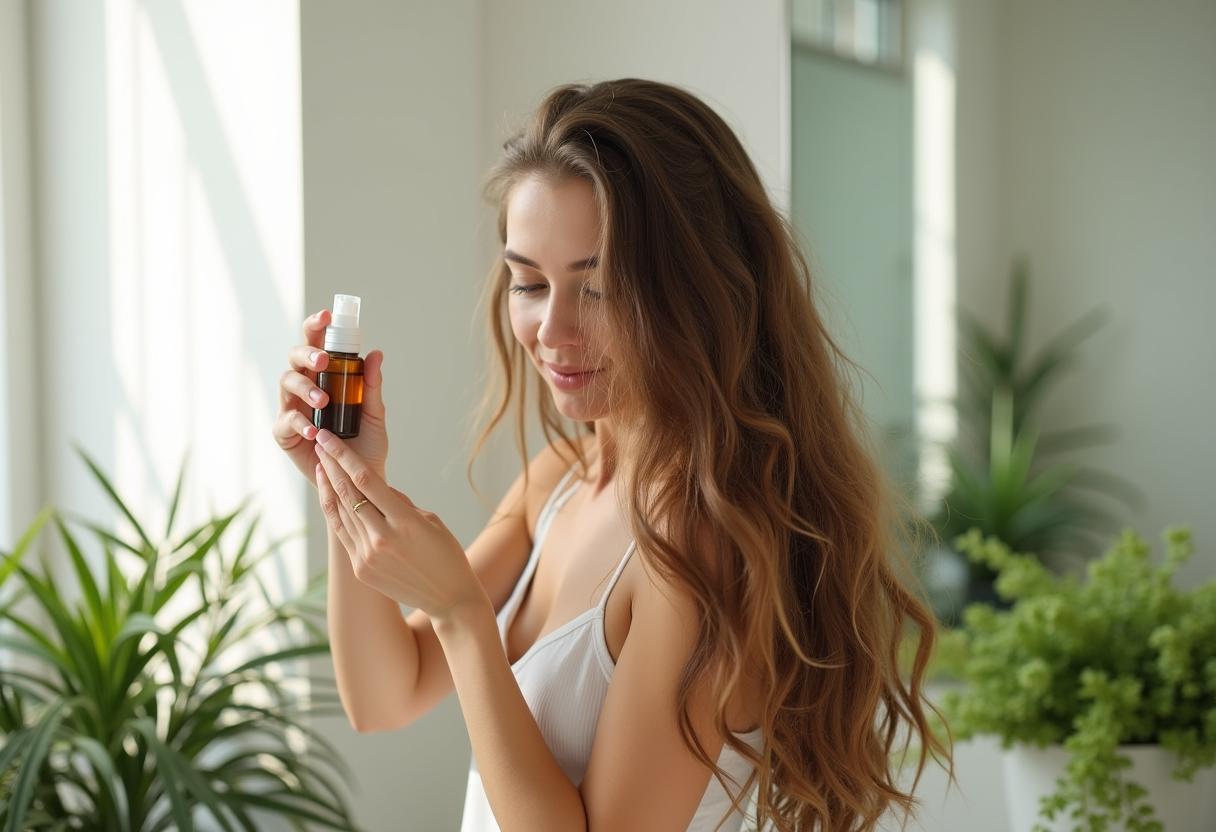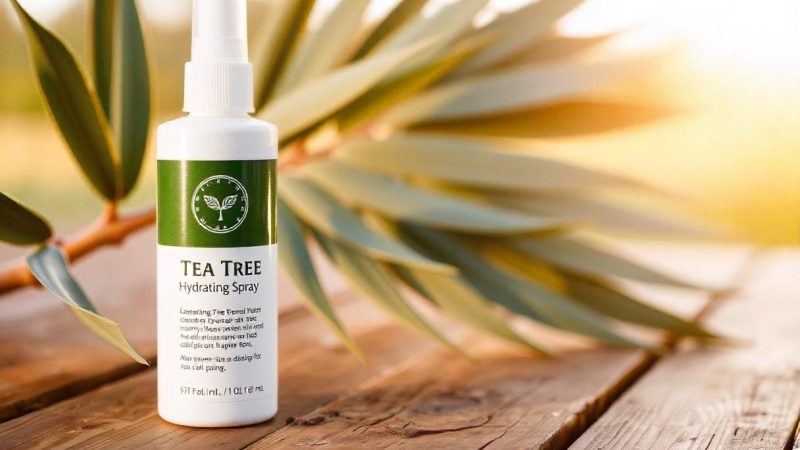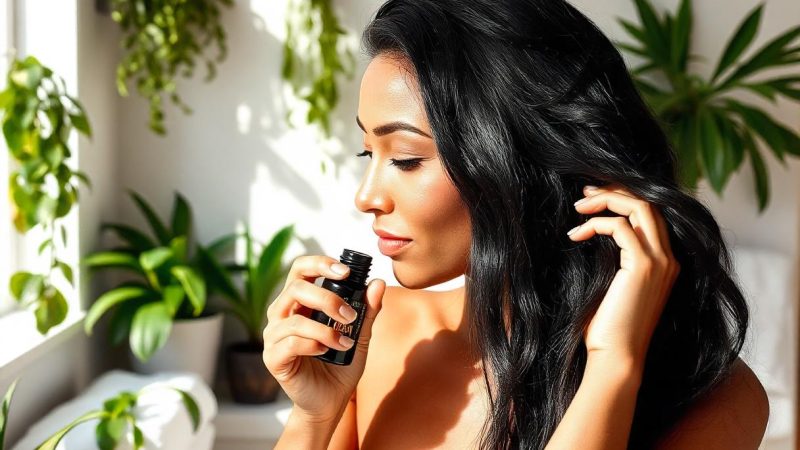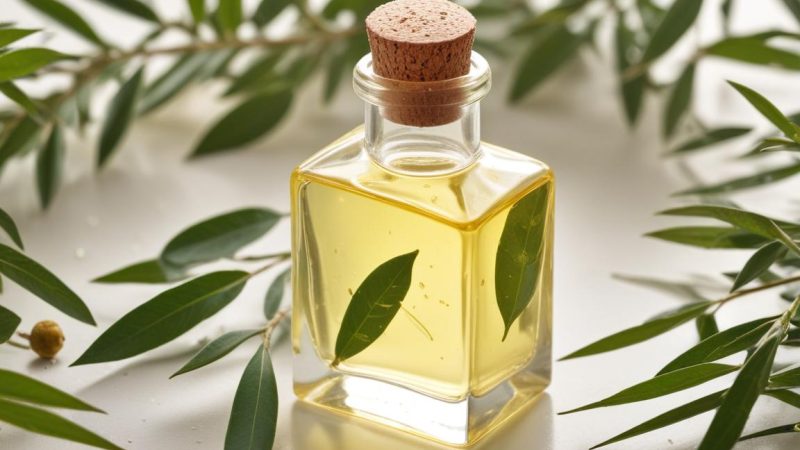FAQs About Using Tea Tree Oil for Hair: Safe Application and Benefits

Tea tree oil has gained widespread popularity in hair care due to its natural antifungal, antibacterial, and anti-inflammatory properties. However, because it is highly concentrated, it must be used correctly to avoid irritation. Here are some frequently asked questions about applying tea tree oil to your hair and scalp, along with best practices for safe use.
Q. Can You Apply Tea Tree Oil Directly on Hair?
A. No, tea tree oil should not be applied directly onto your scalp.
Tea tree oil is highly concentrated and can cause skin irritation, redness, and even allergic reactions if used in its pure form. Its potency is what makes it effective, but it can be too harsh when applied directly without dilution. To use tea tree oil safely, it should be mixed with a carrier oil such as coconut oil, almond oil, or olive oil. These oils not only dilute the tea tree oil but also add their own moisturizing and nourishing benefits for your scalp and hair.
Carrier oils act as a buffer between the potent tea tree oil and your skin, helping to avoid potential irritation while delivering the benefits of both the tea tree oil and the carrier oil. According to dermatologists, always perform a patch test before using tea tree oil on your skin or scalp to ensure that you don’t have an allergic reaction .
Q. How Does One Mix Tea Tree Oil with Shampoo?
A. Mix a few drops of tea tree oil into your regular shampoo.
For effective results, use tea tree oil in your shampoo by adding 3 to 5 drops of tea tree oil to the amount of shampoo you’ll need for one wash. Once mixed, apply the shampoo to your hair and massage it thoroughly into your scalp. Leave it on for a few minutes before rinsing it off. This method helps control dandruff, soothes scalp irritation, and promotes overall scalp health.
Using tea tree oil in shampoo allows for a gentle application that cleanses the scalp without overwhelming it with direct exposure to the oil’s high concentration. This combination has been studied for its effectiveness in reducing dandruff and fungal growth, making it a popular solution in anti-dandruff shampoos .
Q. Can You Leave Tea Tree Oil in Your Hair Overnight?
A. Yes, tea tree oil can be left in your hair overnight when diluted with a carrier oil.
Leaving tea tree oil in your hair overnight can be a great way to maximize its benefits. However, it must be mixed with a carrier oil to prevent irritation. Choose a carrier oil like coconut, almond, or olive oil, and add about 10 drops of tea tree oil to it. Apply the mixture evenly to your scalp and hair, making sure to massage it thoroughly into the roots. You can then leave the treatment in overnight, allowing the tea tree oil to work its magic while you sleep. In the morning, rinse thoroughly with shampoo.
Leaving tea tree oil in overnight can help hydrate a dry scalp, unclog hair follicles, and improve overall hair growth. The carrier oil not only protects your scalp from irritation but also ensures that your hair retains moisture while absorbing the healing properties of tea tree oil .
Tips for Safe and Effective Use of Tea Tree Oil for Hair:
- Patch Test First: Before using tea tree oil, especially if you have sensitive skin, do a patch test on a small area of your skin to ensure you don’t have an allergic reaction. If any redness, itching, or irritation occurs, discontinue use immediately.
- Use with Carrier Oils: Always mix tea tree oil with a carrier oil to dilute its potency. Common carrier oils include coconut oil, olive oil, almond oil, and jojoba oil. This not only prevents skin irritation but also enhances the moisturizing benefits for your hair and scalp.
- Consistency is Key: For best results, use tea tree oil regularly. Whether you’re mixing it with your shampoo or using it as a hair treatment overnight, consistent use is crucial for addressing issues like dandruff, dry scalp, or hair loss.
- Avoid Overuse: While tea tree oil is beneficial, overuse can lead to scalp dryness or irritation. Stick to the recommended amount of drops (5 drops in shampoo, 10 drops in a carrier oil) and avoid applying the oil directly to your scalp without dilution.
By incorporating tea tree oil into your hair care routine in these ways, you can enjoy its antimicrobial and scalp-soothing benefits while avoiding any potential side effects.
Sources:
- Hammer, K. A., Carson, C. F., & Riley, T. V. (2006). Antimicrobial Activity of Tea Tree Oil. Clinical Microbiology Reviews.
- Mayo Clinic. (2022). Tea Tree Oil: Overview and Benefits.
- Satchell, A. C., Saurajen, A., Bell, C., & Barnetson, R. S. C. (2002). Treatment of dandruff with 5% tea tree oil shampoo. Journal of the American Academy of Dermatology.
- Jandourek, A., Vaishampayan, J. K., & Vazquez, J. A. (1998). Efficacy of Melaleuca Alternifolia (Tea Tree) Oil in the Treatment of Tinea Pedis. Journal of the American Academy of Dermatology.
- Gupta, A. K., & Nicol, K. (2004). The Use of Tea Tree Oil in Dermatology. Journal of the American Academy of Dermatology.
- WebMD. (2022). Essential Oils: Tea Tree Oil Benefits and Uses.





